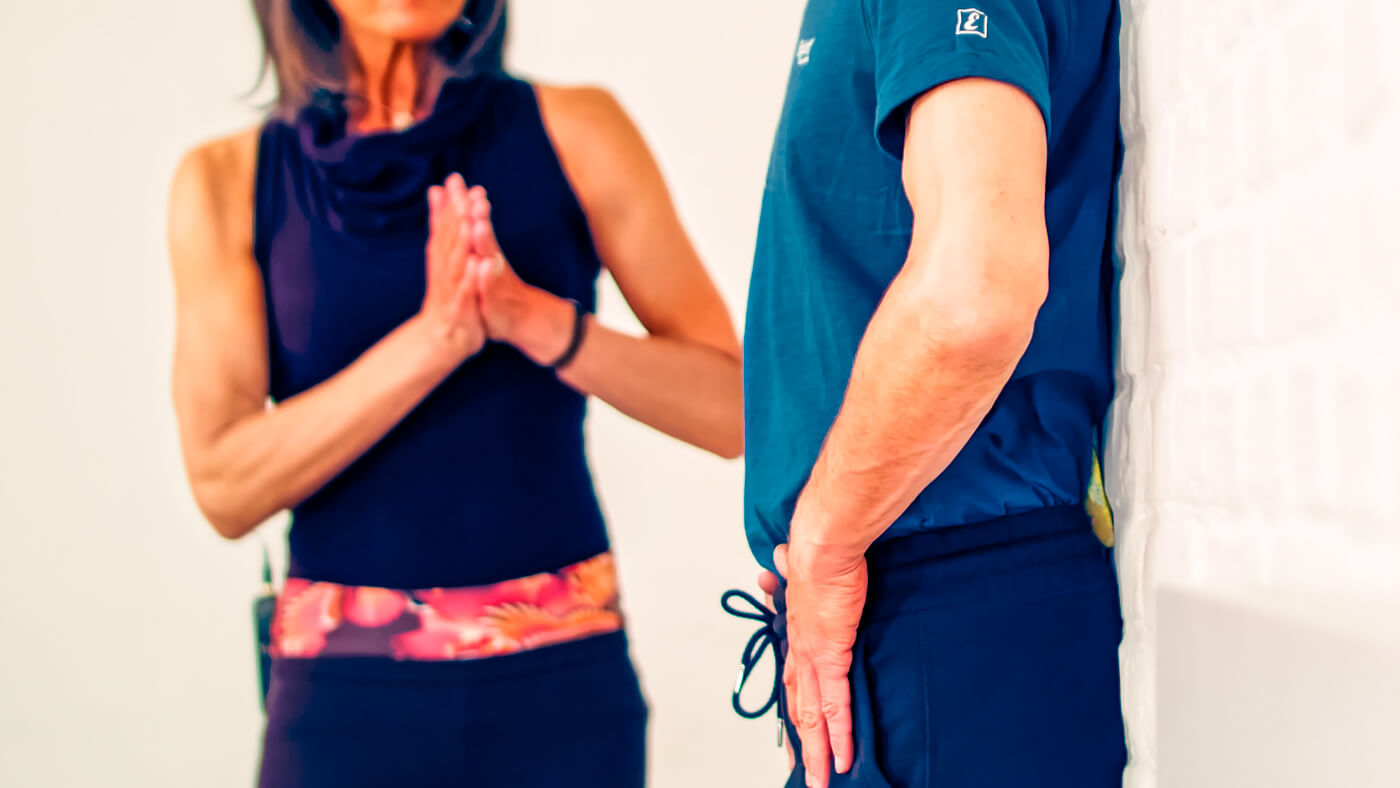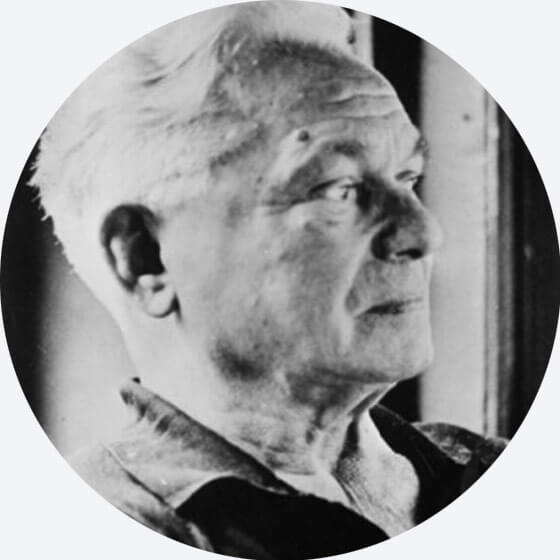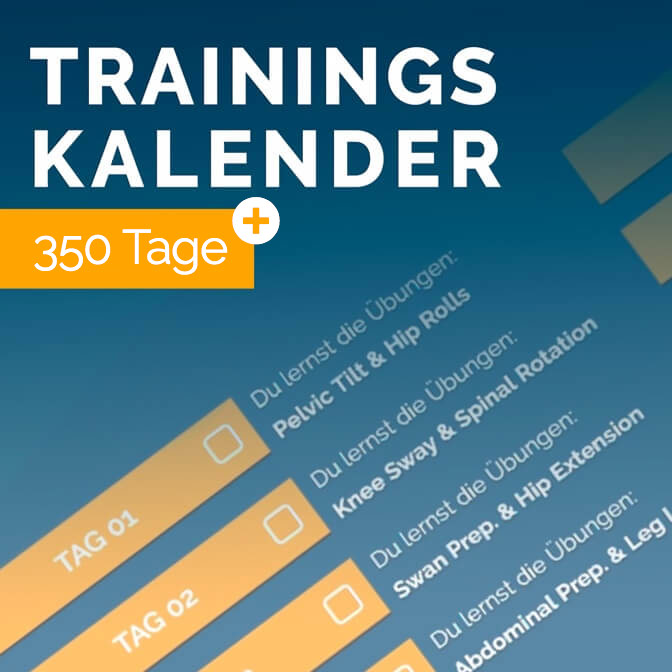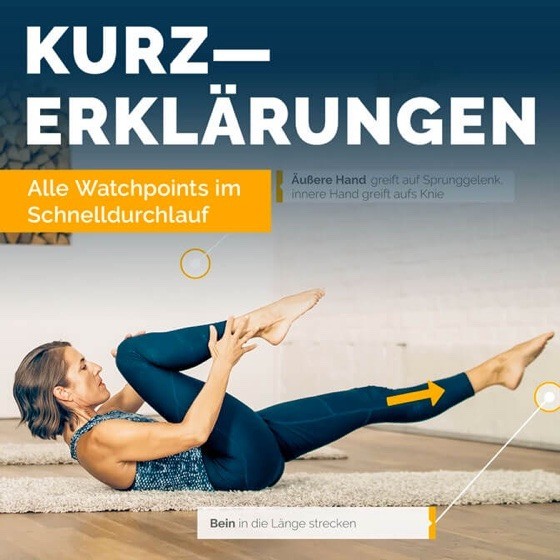
Pilates technique explained
Pilates & Fascia (3)
Dissolve pain with Pilates. How does it work?
July 11, 2022, by Maria Felsner
Pain in the hip and loins
It is believed that 98 % of the non-specific pain in the hip and lower lumbar region of the back (lumbar) is caused by disturbances in the tension of the muscles as well as muscle degeneration.
Rarely, specific pathological causes such as prolapse (herniated disc) or infection are responsible for the pain.
Whether the cause of the pain symptomatology is only due to these so-called disorders has not yet been clarified in expert circles.
A chain reaction...
What happens when the tension in the hip flexor (iliopsoas) is disturbed?
At Too much tension in the hip flexor not only restricts movement in the hip, but also the upright posture. High tone in the hip flexor can thus be the cause that we can neither swing the leg freely back and forth nor hold the upper body above the pelvis.
Is the hip flexor attenuatedit loses one of its important functions as a stabilizer in the lumbar region.
As a result, breathing is restricted because the chest no longer moves functionally. can extend into all the right and the diaphragm is slowed down in its natural vibration.
Due to restricted breathing and posture, the pelvic floor is in turn incorrectly loaded, which has a negative effect on its functionality.
The surrounding organs kidney, adrenal gland, intestine and appendix are also affected by the Voltage fault constricted. This creates a certain pressure on the impulse-giving nerve, which in turn can trigger inflammation and even digestive problems.
If we look a little closer at the connection between the three areas of the diaphragm, pelvic floor and hip flexors, it will probably become more understandable how these three systems interact not only through our muscles, but also through fascia.
Diaphragm, synonym: diaphragm
The diaphragm is a functional muscle-fascia-tendon plate with two domes, the so-called Centrum Tendineum. The right dome is slightly higher due to the liver. Between the two domes, the diaphragm forms a depression caused by the heart and pericardium (also called pericardium or pericardium).
Also, the diaphragm is in direct contact with the lungs and demarcates the other organs: heart, liver, stomach and spleen.
The lower fibers of the diaphragm are in turn connected to the upper fibers of the psoas major and psoas minor, which together with the iliacus form the iliopsoas (hip flexor).
The connective tissue strands and sheaths of the psoas major continue to lengthen and connect to the pelvic floor with its three layers.

The pelvic floor
The pelvic floor is a functional network of muscle fibers, fascia, and tendon/connective tissue layers with many roles.
The pelvic floor supports and protects the abdominal and pelvic organs and opens and closes the orifices. It is responsible for continence and at the same time must be able to release and relax during sexual intercourse, urination and defecation.
Another important function of the pelvic floor is that it serves to stabilize the spine through its center of strength and therefore also contributes to healthy posture.
In relation to the Fascia, which enclose not only all our skeletal muscles, but also the organs, vessels and nerves, and even affect the brain, we can see that we cannot consider the diaphragm separately from the pelvic floor.
The hip flexor, lat. iliopsoas
As briefly described and pictured above, the hip flexor consists of three muscle cords: the psoas major, the psoas minor (which is often no longer present in older people), and the iliacus.
Due to its complex course thanks to the various anatomical landmarks, this muscle, fascia and ligament structure is complicated.
To understand the connection from the upper body to the lower extremities, it is interesting for us to know that a layer of the psoas major originates from the last thoracic vertebrae to the lumbar vertebrae along with their intervertebral discs.
The deep layer, on the other hand, originates at the transverse processes of the 1st to 4th lumbar vertebrae.
The iliacus originates at the iliac fossa, the iliac fossa (also called the iliac scapula).
Both again have their insertion at the lesser trochanter, a bony prominence on the inner side of the femur.
Thus, we can understand that the hip flexor not only flexes the hip, but also has a stabilizing function and at the same time establishes an important role between the diaphragm and the pelvic floor and is very close to the organs mentioned above.

"Physical fitness is the first requirement for happiness. Our interpretation of physical fitness is the achievement and maintenance of a uniformly developed body with a healthy mind capable of naturally, easily and satisfactorily performing our varied daily tasks with spontaneous pleasure and enjoyment."
JOSEPH PILATES
Here you can download our LIVE Pilates hour on the topic. In this LIVE lesson we will go deeper into the tips on the topic "Pilates & Fascia 3 - dissolve pain with Pilates".
This is how
How can we positively influence the chain reaction described?
- Alignment of the pelvis via the "Pelvic Tilt
About the Pelvic Tilt we train the pelvic coordination. This is important for pelvic posture and alignment of the spine and lower extremities.
With the Pelvic Tilt exercise we not only train the muscles of the lower back and the abdominal and pelvic floor muscles, but also stretch and mobilize the lower back, i.e. the lumbar spine, at the same time. - RELEASING TENSIONS IN THE TWORKING SKIN THROUGH BREATHING
Normally, the diaphragm tenses during inhalation, its domes lower, and a so-called pressure wave is created downward toward the pelvic floor.
The pelvic floor relaxes, yielding to the wave.
During exhalation, the diaphragm relaxes. At the same time, the pelvic floor tenses and supports the exhalation by lifting.
If the diaphragm is tense, not only breathing is restricted. It can also trigger a wide range of pain and discomfort.
Causes of tension can be an active overload - for example, through running and prolonged coughing - or also so-called satellite trigger points. This means that the cause of the pain is not in the diaphragm, but for example in the abdominis rectus (abdominal muscle), but this sends the pain like a satellite "into the diaphragm".
Possible solutions are:
Alignment, self-massage, pump breathing, relaxed supine position. - SOLUTION OF TENSION AND IMMOBILITY IN THE HOOVING DUCTOR WITH SIMULTANEOUS FUNCTIONAL CRAPPING OF THE LUMBAL AREA.
Experts also disagree on whether hip flexor imbalance is the No. 1 cause of Back pain is.
However, from my 25+ years of practice, I have found that a combination of movement, breathing, relaxation and conscious Body awareness can alleviate and even eliminate the symptoms.
However, most experts agree on one thing. Not only physical factors such as genetics, among others, contribute to pain symptomatology. Psychological and social factors also contribute to being plagued by chronic lumbar back pain.
Thus, the symptomatology is not a pathological diagnosis, but rather the symptom resulting from various causes.
Possible solutions are:
Self-massage, relaxation, stretching and strengthening
Conclusion
If we summarize all these points, it can be said that first and foremost it is important to align oneself well in order to perform movements optimally and to be able to breathe properly.
Our joints need mobility, stability as well as flexibility. Our muscles and fascia lines need to be permanently supported and trained.
The training is supported with self-massage of the fasciae via pressure or strokes, through relaxation exercises, targeted breathing and meditation we have covered a wide range, which contributes to the well-being in all areas.
You can achieve all of this with a regular Pilates Training with our online Pilates course.
PS: With our Pilates training calendar you can easily integrate regular Pilates training into your everyday life and stay motivated.
Other articles that may interest you
Pilates and fascia (1): The basics
Pilates and fascia (2): How the fasciae work






